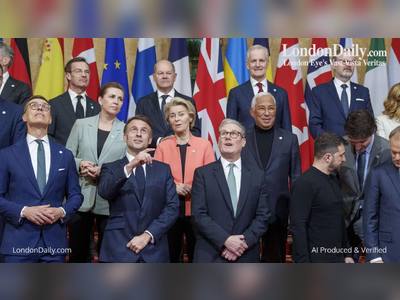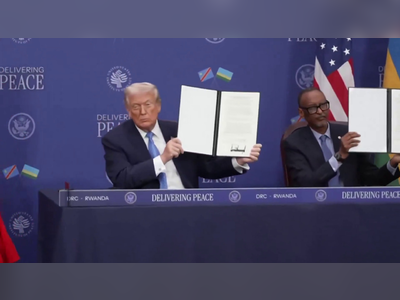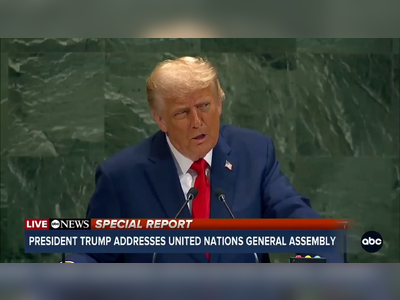China Unveils Sweeping Rare Earth Export Controls to Shield ‘National Security’
Beijing imposes extended restrictions on magnets, technologies, and overseas cooperation in rare earth sector
On October 9, 2025, China announced a major expansion of export controls over rare earth elements and related technologies, framing the move as essential to protecting national security and technological sovereignty.
The updated rules widen the scope of previously introduced 2025 controls, imposing tougher licensing, limiting defense exports, and tightening scrutiny on semiconductor use.
The Commerce Ministry underscored that the changes represent China’s first extraterritorial export-control regime.
Under the new regime, any foreign company exporting goods that contain Chinese rare earths, or that rely on Chinese rare earth technology or parts, must now secure approval from China’s authorities.
Exports destined for defense uses will be outright prohibited, while shipments tied to semiconductor or advanced applications are subject to case-by-case license review.
China also added recycling equipment and magnet manufacturing components to its restricted list.
At the same time, unauthorized overseas cooperation with Chinese rare earth firms is now barred.
The move builds on April 2025 regulations that targeted seven medium and heavy rare earths, including dysprosium and terbium, along with magnets and alloys, requiring export permits for many goods and technologies.
That earlier step had already triggered supply bottlenecks and global concern.
The new edition amplifies Beijing’s grip over downstream value chains—with licensing hurdles for recycling infrastructure and components that incorporate restricted magnets.
China now claims it can block exports of foreign manufacturers that rely on Chinese machinery or inputs unless they comply with its licensing system.
China dominates the global rare earth landscape, producing over 90 percent of processed rare earths and rare earth magnets, and supplying critical materials central to electric vehicles, wind turbines, aerospace systems, and military technologies.
The country has long banned the export of core magnet-manufacturing technologies; these 2025 rules deepen that firewall.
China also cited rising threats from smuggling and illicit trade, pointing to the need for greater oversight of strategic materials.
Externally, the new controls raise the stakes for global supply chains.
Nations and firms dependent on rare earths—particularly the United States, Europe, Japan, and advanced manufacturers—now face escalating instability.
Some sectors report delays or scarcity in magnet supplies, with price volatility following each regulation wave.
Governments are responding urgently: efforts to boost domestic refining, develop alternative suppliers, recycle rare earths, and stockpile strategic reserves are accelerating.
In a parallel development, China has sought assurances from India that heavy rare earth magnets exported by India will not be rerouted to the U.S. for use in defense systems.
India responded with end-user certificates but has yet to finalize full export agreements under Beijing’s stricter regime.
Diplomacy is under strain as the rare earth sector becomes a chessboard in broader geopolitical competition.
China is also exploring new ways to extend its influence: reports indicate that it is in early talks to partner with Malaysia on building a rare earth processing refinery.
Such a move could allow Beijing to bypass outright export bans while maintaining control over critical knowledge and supply flows.
The project is tentative, and Malaysia has expressed concerns about environmental and regulatory constraints.
Beijing defends its approach as consistent with international practices.
The China Nonferrous Metals Industry Association praised the measures as a legitimate means to uphold national interests, stating that core materials with dual civilian and military applications must be tightly regulated.
But many export-dependent economies view the expanded controls as a tool of coercive leverage.
As the world wrestles with rare earth scarcity and technological risk, China's strengthened export controls mark a turning point in how power is exercised through materials and supply chains.
The updated rules widen the scope of previously introduced 2025 controls, imposing tougher licensing, limiting defense exports, and tightening scrutiny on semiconductor use.
The Commerce Ministry underscored that the changes represent China’s first extraterritorial export-control regime.
Under the new regime, any foreign company exporting goods that contain Chinese rare earths, or that rely on Chinese rare earth technology or parts, must now secure approval from China’s authorities.
Exports destined for defense uses will be outright prohibited, while shipments tied to semiconductor or advanced applications are subject to case-by-case license review.
China also added recycling equipment and magnet manufacturing components to its restricted list.
At the same time, unauthorized overseas cooperation with Chinese rare earth firms is now barred.
The move builds on April 2025 regulations that targeted seven medium and heavy rare earths, including dysprosium and terbium, along with magnets and alloys, requiring export permits for many goods and technologies.
That earlier step had already triggered supply bottlenecks and global concern.
The new edition amplifies Beijing’s grip over downstream value chains—with licensing hurdles for recycling infrastructure and components that incorporate restricted magnets.
China now claims it can block exports of foreign manufacturers that rely on Chinese machinery or inputs unless they comply with its licensing system.
China dominates the global rare earth landscape, producing over 90 percent of processed rare earths and rare earth magnets, and supplying critical materials central to electric vehicles, wind turbines, aerospace systems, and military technologies.
The country has long banned the export of core magnet-manufacturing technologies; these 2025 rules deepen that firewall.
China also cited rising threats from smuggling and illicit trade, pointing to the need for greater oversight of strategic materials.
Externally, the new controls raise the stakes for global supply chains.
Nations and firms dependent on rare earths—particularly the United States, Europe, Japan, and advanced manufacturers—now face escalating instability.
Some sectors report delays or scarcity in magnet supplies, with price volatility following each regulation wave.
Governments are responding urgently: efforts to boost domestic refining, develop alternative suppliers, recycle rare earths, and stockpile strategic reserves are accelerating.
In a parallel development, China has sought assurances from India that heavy rare earth magnets exported by India will not be rerouted to the U.S. for use in defense systems.
India responded with end-user certificates but has yet to finalize full export agreements under Beijing’s stricter regime.
Diplomacy is under strain as the rare earth sector becomes a chessboard in broader geopolitical competition.
China is also exploring new ways to extend its influence: reports indicate that it is in early talks to partner with Malaysia on building a rare earth processing refinery.
Such a move could allow Beijing to bypass outright export bans while maintaining control over critical knowledge and supply flows.
The project is tentative, and Malaysia has expressed concerns about environmental and regulatory constraints.
Beijing defends its approach as consistent with international practices.
The China Nonferrous Metals Industry Association praised the measures as a legitimate means to uphold national interests, stating that core materials with dual civilian and military applications must be tightly regulated.
But many export-dependent economies view the expanded controls as a tool of coercive leverage.
As the world wrestles with rare earth scarcity and technological risk, China's strengthened export controls mark a turning point in how power is exercised through materials and supply chains.









